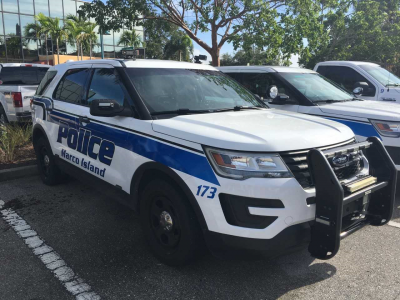ALPR/LoJack
ALPR
Automated license plate readers (ALPRs) are computer-controlled camera systems which can be mounted inside a police car or attached to street poles, overpasses, or mobile trailers. An ALPR captures the license plate characters along with the date, time, and location information. The license plate reader photographs the license plate and photographs the vehicle. The information is then loaded into a database.
The information can be used to find out where the vehicle has been, determine if the vehicle may have been near a crime scene, and can additionally identify traffic patterns. Law enforcement agencies can then load hot-lists which will alert the officer to information such as if the vehicle has been entered into FCIC/NCIC vehicle as stolen or abandoned, if the registered owner has an outstanding warrant, if the registered owner currently has a suspended driver’s license, and could include information about minor traffic infractions such as tag expiration.
LoJack
Lojack is a stolen vehicle recovery system that is integrated with law enforcement, enabling vehicles and equipment to be tracked and recovered by police. The system uses a hidden mounted transceiver, and a tracking computer installed in police cars and aircraft, operating on a dedicated tracking frequency set aside by the FCC.
The core of the LoJack system is a small, silent radio transceiver that is discreetly installed in a vehicle. The vehicle is not marked as possessing a LoJack transceiver, and the location of the transceiver within the vehicle varies from one car to the next. Once installed, the unit and the vehicle's VIN are registered in a database that interfaces with the National Crime Information Center (NCIC) system used by federal, state and local law enforcement agencies throughout the U.S. In the event of a theft, a customer reports the incident to the police, who make a routine entry into the state police crime computer, including the stolen vehicle's VIN. This theft report is automatically processed by LoJack network computers, triggering a remote command to the specific LoJack unit in the stolen vehicle.
The command activates the LoJack unit to start sending out signals to LoJack police tracking computers on board some police cars. Every police car so equipped, that is within a 3–5 mile radius of the signal source, will be alerted. The tracking units will display an alphanumeric reply code and an indication of the approximate direction and distance to the stolen vehicle. Based on the reply code, the police can obtain a physical description of the vehicle, including make (brand), model, color, VIN and license plate number. Police aircraft can also be equipped with tracking computers; airborne units can receive the (line-of-sight) signals from further away than ground-based units. The signal is received in equipped police vehicles utilizing a phased array antenna system, hence the four distinctive antennas on the roof. This provides the directional location tracking capabilities of the system.[2]
In addition to automobile theft recovery, LoJack systems are used to recover stolen construction equipment and motorcycles.


Parks & Recreation Facebook MIPD Facebook
Fire Rescue Twitter
Parks & Recreation Twitter
Marco Island Police Twitter